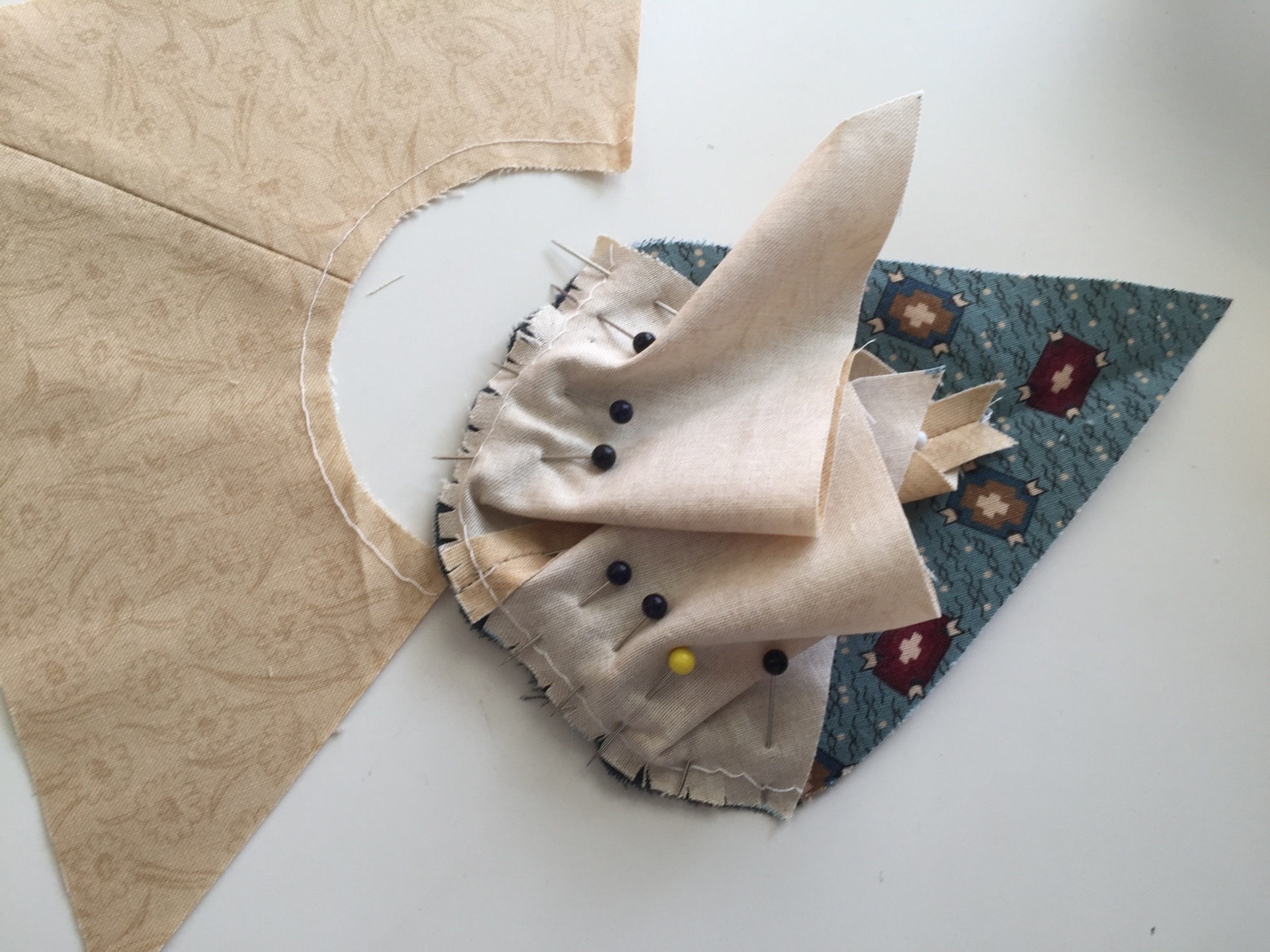“But it is so beautiful.” My grandmother used those words to describe the block patterns she admired the most; a six-pointed star made of diamonds, and hexagons used to construct the Grandmother’s Flower Garden. She said this to me when I first started quilting and looked up at her. “Yes, they are,” I said, “but I’m not going to make them.” I wasn’t going to make them because they were not simple squares or triangles and hard to sew on the machine. Through the years my idea of “hard” shifted as I learned the tricks of machine sewing the Y-seam (stop a quarter inch short of the edge and shorten the stitches) and purposely bought pre-cut hexagons to make a Grandmother’s Flower Garden quilt. I thought of her while I was making the top.

Y-seams have nothing on curved seams. I hear my grandmother’s words declaring beauty when I look at the Star and Crescent block. The only other times I’ve sewed the crescent shape was an applique. The only times I remember cutting and sewing curved pieces was to insert the sleeves in dresses, and a variation of the New York Beauty pattern. I didn’t get far on that New York Beauty, another casualty in my UFO pile.
In the world of rating skill levels for the patterns, the Star and Crescent block ranks near the top of any advanced or expert list.
For one, there are multiple cuts across the bias that get pulled, tugged and warped. The stretching bias cuts worked to my advantage when I need a little extra fabric in one direction. But on the other hand, it distorts the block and keeps it from laying flat.

Then there are the three seams coming together and forming a Y. I like zipping along in my sewing with long, straight seams and chain piecing, not the stopping and starting of short seams that join at weird angles.
If that were not enough, there are the pieced curves, which, when set right sides together are headed in opposite directions. Careful clipping of the side curve allows the fabric to match the edges of the outside curve, along with multiple pins to prevent tucks. I find the process tedious, and I’m not sure how far I’d get if I needed to sew more than one block for a sampler quilt.